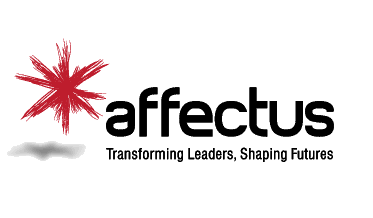As we move through “graduation season” at Affectus it is a great time to reflect on “what next” for our graduates.
We spend time providing them with personalised “Exit Letters” and part of that communication is to encourage them to understand about re-entry.
The understanding that Affectus has developed comes from researching institutes such as NASA and Universities. We have gathered information about international exchange programs and astronaut re-entry procedures. And from our reading, we have been able to develop a short document about how to leave something familiar and comfortable and life-changing (such as your time in space or our leadership programs) and return to something that once was familiar.
We spend time discussing how to leverage those life-changing, new-direction-setting leadership experiences to courageously alter your world for the better.
Our facilitators ask people to make a commitment and to publicly state what they are going to focus on now. And we are also committed to continue this conversation through the idea of leverage.
What is leverage?
The use of something to maximum advantage, or the power to influence people and get the results you want, or positioning your feet on the ground and pushing (cue smiling images of kids on seesaws).
More seriously, it is
to influence in a manner that will multiply the outcomes without having to increase the effort or input.
What does that mean for people moving beyond Affectus?
Archimedes is credited with saying
“give me a place to stand and with a lever I will move the whole world".
Leverage is here to assist us.
Many, many objects are raised through the process of leverage.
How do our graduates leverage their leadership experience to aide and raise.
Recently the Queensland Seafood Industry Association interviewed four of our graduates about their experience in one of our programs.
The interviewees continually to refer to the power of the team and how coming together ensured powerful outcomes for the industry.
This is leverage in a team setting. Understanding the value of individuals and working as a group to jump on one end of the seesaw.
What needs to be pointed out here is that the individuals in the group maintained their autonomy and independence from each other. However, they were all moving toward the same goal. Eventually, at the right time, they all came together and put downward pressure on the lever to “unlock the value of our seafood”. And the result was the seafood community of Australia seeing themselves and their value in a very different light. This would not have happened if the team hadn’t co-ordinated and decided how and when to press on the lever they were grasping.
Why use leverage?
If we go back to the seesaw image we can see the reason to leverage . That is because it raises “things” while expending less energy. It raises that which may remain stuck otherwise.
When I think about the simple seesaw model I think about being raised by the person on the other end of the plank. But I also think about the position of the fulcrum (the bit in the middle of the plank). If the pivot point is too close to me as I push down then I have to use a huge amount of energy to raise the opposite end of the seesaw. But if the pivot point is too far away then I can’t get my hands on the end of the seesaw. Remember having to ask your parent to grab the end of the seesaw? Remember the pivot point.
What else is leverage?
Leverage is also about the pivot point and getting that right so the lever can do the work.
Therefore, the thinking about leverage isn’t just about thinking about the end (of the plank) and raising something. It is also about understanding the positioning (and repositioning) of the pivot point.
It was wonderful to see the power of understanding emerge during the final stages of the recent national leadership programs.
The understandings about:
- What are we really trying to raise in this meeting with the Federal Minister?
- How do we present our ideas in a way that will increase our impact?
- How can we represent our ideas and outcomes in a manner that will efficiently provide downward force on the lever?
- What difference will our work make?
- Can we position the people of the industry who understand our ideas and are on board (the pivot point) to make the change we see?
Great thinking was done about these concepts.
Who can you put pressure on lever?
Affectus has explored this concept of leverage to efficiently use the combined effort to maximise affect. And we are totally convinced that everyone can identify and use the lever.
Remember…
- Being a young child and wanting something; the hissy fit that got you what you wanted (possibly only once).
- As a teenager working out how to manage parents with the assistance of “everyone else is allowed to”.
- As a young adult succeeding, and then understanding, that you need to work really hard to get the effect you want. And then acknowledging that it was a combined effort not just your force that got you there.
These lessons, however they appeared in your life, teach about:
- The raising of an idea (the person on the other end of the seesaw)
- How to position the pivot point (close to you or a long way away from you)
- The amount of pressure applied (once or over and over again) to get the result.
Everyone can and does use leverage but we can be smarter about it and think about
- What needs to be raised
- What effort will be required
- Where the pivot point should be to minimise the effort and maximise the affect
